The Micah Parsons effect
On Sunday, the Packers once again played down to the level of their competition. However, their superstar pass rusher made sure it didn't cost them a win.
Good morning!
The Green Bay Packers return from the bye this week. After a strong opening two weeks gave way to back-to-back disappointments, they have plenty of questions to answer.
On Sunday, the Green Bay Packers notched another victory over an inferior opponent, but they again played down to their competition. The Arizona Cardinals at one point held a 10-point lead, and the Packers trailed until the final two minutes of regulation. Still, with the game on the line, Green Bay’s playmakers came through to secure the win.
Today’s edition of The Leap examines those field-tilting players and what to make of two high-leverage Matt LaFleur play calls.
Thank you for reading and supporting our coverage. You can also support our work by following us on social media:
Jason B. Hirschhorn: @by_JBH on Twitter / @byjbh@bsky.social on Bluesky / @by_jbh on Threads
Peter Bukowski: @Peter_Bukowski on Twitter / @peterbukowski@bsky.social on Bluesky / @peter_bukowski on Threads
The Leap: @TheLeapGB on Twitter / @theleap.bsky.social on Bluesky / The Leap's YouTube channel
If you appreciate thoughtful, independent coverage of the Packers and NFL, please consider becoming a paid subscriber. Your support allows us to serve this community with the stories and reporting it deserves.
As always, thanks for making The Leap a part of your day.
The Micah Parsons effect
Jason B. Hirschhorn: When the Packers traded for Micah Parsons shortly before Week 1, they did so to supercharge an already strong defense for a championship run. And through the first two weeks of the season, that plan appeared to place them on a bullet train headed for Levi’s Stadium, the host site of Super Bowl LX.
What transpired over the ensuing weeks didn’t totally undermine the premise, but it did raise some questions. Parsons continued to harass quarterbacks -- 19 pressures combined over the Packers’ last three games, according to Pro Football Focus -- but he only managed one sack, and the pass rush as a whole struggled to close. That two of those contests featured Joe Flacco as the opposing starter didn’t help alleviate concerns outside of 1265 Lombardi Ave.
The inability to turn pressure into sacks had a deleterious effect on the defense. Against the Packers in Week 4, Dak Prescott had arguably his finest performance in several years, piling up over 300 passing yards and three touchdowns while completing some of the most insane throws of his career.
That narrative provides important context for Parsons’ performance on Sunday. Against the Cardinals, the All-Pro pass rusher generated three sacks and, according to PFF, 10 total pressures. He had a fourth sack negated by a penalty as well as a potential half sack given instead to Quay Walker.
Even without the additional production on his stat line, Parsons registered more sacks on Sunday than any Packers player managed in a single game last year.
Of course, Parsons didn’t have a perfect game by any means. In the second quarter alone, he drew a penalty for a hip-drop tackle and another flag for jumping offsides. Those two mistakes respectively negated a sack of Jacoby Brissett and turned a third-down stop into a touchdown opportunity for the Cardinals.
But the superstar pass rusher lived up to his billing during the game’s closing moments. With the Cardinals pushing for a last-minute touchdown and already digging their way out of multiple second-and-long situations, Parsons helped close the door.
On first down, Parsons beat right tackle Jonah Williams cleanly for a sack. The play pushed the Cardinals back to the Green Bay 35-yard line and forced them to use their second-to-last timeout.
On the next play, Arizona responded by throwing multiple bodies at him, creating one-on-one matchups for Barryn Sorrell and Rashan Gary. Gary forced Brissett to scramble for a short gain, necessitating that the Cardinals use their final timeout. The next play saw Parsons effectively triple-teamed, freeing Karl Brooks and resulting in a hurried incompletion. The Hail Mary prayer that followed landed harmlessly out of bounds, ending the comeback attempt.
Parsons didn’t win the game himself, and the defense overall didn’t have a sterling performance by any means. But no other player along the Packers’ defensive front has delivered such an impressive performance in the big moments this season. He unlocks the best version of the unit, and Green Bay wouldn’t have emerged victorious on Sunday without him.
With Parsons reclaiming his form and needle movers like Devonte Wyatt expected to return in the near future, the Packers defense could round into form just in time for one of the more difficult stretches of the schedule.
Reviewing Matt LaFleur’s two big fourth-down calls
JBH: The Leap has covered Matt LaFleur’s turn toward conservative game management extensively over the past few years. The kick-go decisions became a major concern down the stretch of 2024, and we referenced his cowardly punts less than a week ago. His explanations for some of these decisions only make them seem more puzzling.
“I know some of our guys wanted us to go for it,” LaFleur said about taking a delay-of-game penalty on fourth-and-short and punting against the Dallas Cowboys. “Here’s the deal. If that happened in the second half, based on the complexion of the game, I probably would have had a different decision. In the first half, the way our defense has been playing up to this point, and with the kicker they have, (Brandon) Aubrey, you’re already in field-goal range for him.”
So, when the Packers faced a kick-go decision on their first possession of Sunday’s game, most probably expected LaFleur to send out the punting unit.
Instead, LaFleur dialed up a seven-step drop shot play.
From a design standpoint, the play worked. In a trips alignment, Dontayvion Wicks ran a 10-yard out from the No. 3 position and Matthew Golden ran a fade route, pulling safeties Budda Baker and Dadrion Taylor-Demerson toward the right boundary and leaving Romeo Doubs with a one-on-one matchup down the seam. Jordan Love overthrew Doubs, resulting in a turnover on downs.
Given the circumstances -- fourth-and-5 from the Arizona 38-yard line -- one could easily argue that LaFleur erred in putting this deep shot on the menu, not to mention the wide-zone run he dialed up for Emanuel Wilson on the previous down against an unfavorable box. Granted, Love appeared to audible prior to running the play, but that still means LaFleur gave his quarterback the option in a high-leverage situation.
And that would prove to be just one of the Packers’ fourth-down gambles. While trailing 23-20 with 2:32 left on the clock, LaFleur initially sent the kicking unit to attempt a game-tying field goal. He then second-guessed himself and called timeout, giving the offense a shot at extending the drive and potentially generating a lead. Needing just 2 yards to move the sticks, it seemed unlikely that Green Bay would push the ball deep down the field.
Seconds later, Love completed a 15-yard out to Tucker Kraft.
In fairness to LaFleur, Love had other options on the play. Doubs beat his man over the middle at roughly the same time that the quarterback fired to Kraft. Additionally, Josh Jacobs had his defender beat toward the flat and could have provided a checkdown. That the ball went to the deepest receiver likely says more about Love than anything else.
Still, LaFleur gave Love the green light to throw to the most high-risk, high-reward route on the concept, and that has to factor into any evaluation of the process.
The whiplash of LaFleur shifting from weeks of conservatism to Sunday’s fourth-down aggression raises more questions than it answers. If he felt comfortable pushing the ball in the first quarter against the Cardinals, why did he express reticence about doing so in other games? Why did he dial up (or allow an audible to) a deep shot when a short gain would move the sticks on multiple occasions?
LaFleur has yet to provide a clear reason for the disconnect between his various in-game decisions. However, any shift away from the overly conservative approach of the past season and change will probably benefit the Packers in the aggregate. He just needs to find the right middle ground.
Other thoughts and observations
Though the Packers’ O-line still had more breakdowns in pass protection than it should have, the unit took another step forward against the Cardinals. Jordan Morgan continues to settle in at right guard and played every snap for the first time this season. Meanwhile, Elgton Jenkins’ early season struggles have mostly dissipated. Rasheed Walker suddenly seems like the weak link. The coaches will give him time to work through it, but Anthony Belton’s return to health could force a difficult decision if the situation doesn’t improve.
Nate Hobbs just played perhaps his worst game of the season. Against the Cardinals, the veteran corner allowed four catches for 87 yards on six targets while missing two tackles and drawing a penalty. Three of those receptions came deep down the field, with Marvin Harrison Jr. burning him twice for 58 combined yards. Hobbs only played three snaps in the slot, but maybe he needs to work there more extensively given his issues covering bigger-bodied outside receivers.
Warren Brinson saw his heaviest workload yet on Sunday, and he once again rose to the challenge. The rookie defensive lineman registered multiple pressures and a stop in 33 snaps. He also saw some action as a true defensive end on top of his work along the interior. Meanwhile, Nazir Stackhouse showed signs of life, giving Green Bay double-digit quality snaps for the first time in his career. The defense still needs Devonte Wyatt back, but the young pups haven’t wasted the opportunity during his absence.
The Packers unsuccessfully went through a handful of kickers in recent years before bringing veteran Brandon McManus aboard midway through 2024. McManus probably remains their best option moving forward, but injury replacement Lucas Havrisik has made it a conversation. A former UFL player who also had a few cups of coffee in the NFL, Havrisik has made every one of his kicks thus far for Green Bay, including a team-record 61-yard field goal on Sunday. McManus will presumably get his job back once his quad injury heals, but Havrisik won’t have to go back to substitute teaching if and when that happens.



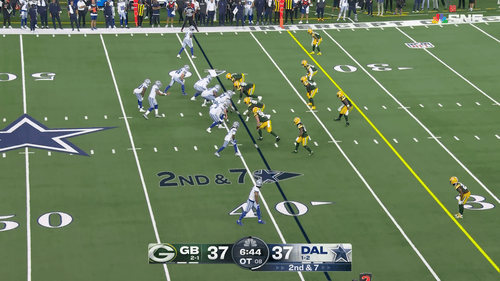
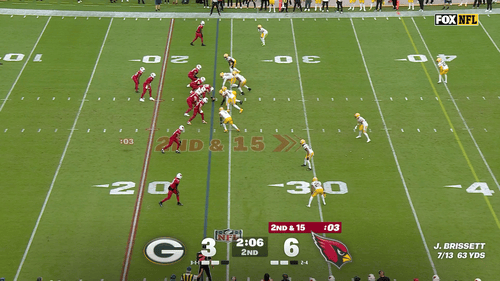
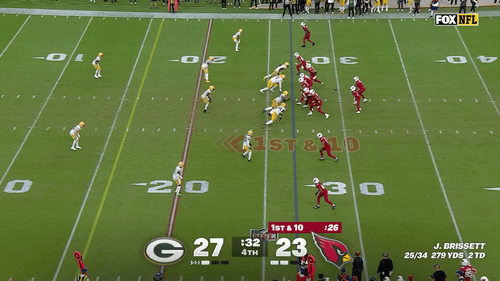
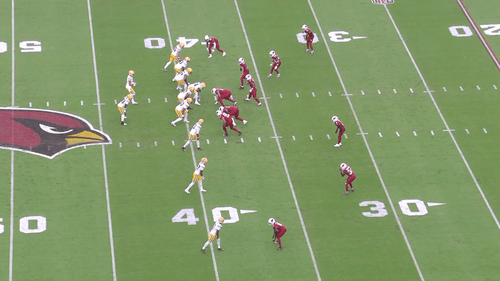
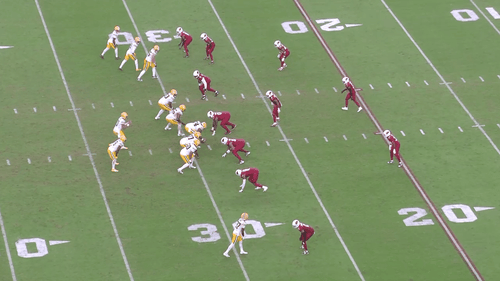
63 and 75 are costing themselves millions